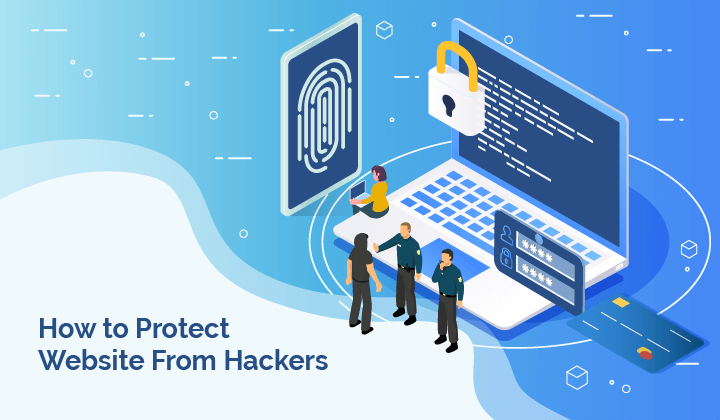Cybersecurity threats are becoming a prevalent issue for all businesses and individuals, and the number of cybercrimes has also increased dramatically in recent years.
On the other hand, it’s no secret that hackers often use the help of malicious bots to launch their attacks and exploit your website, and while in theory there are various bot detection and management solutions designed to tackle this issue, in reality, today’s bots are getting more sophisticated than ever and we can no longer rely on traditional means.
Also read:- write for us tech
Hackers can use malicious bots for data breaches, spying, performing malware injection, and compromising websites of various sizes, among other malicious attacks.
Here, we will share some useful tips to stop hackers from using bad bots to exploit your website, but let us begin by discussing the core challenges in stopping these bots.
Three Main Challenges In Stopping Bad Bots

At the first glance, blocking all bot traffic coming to our website might seem like the most effective, cost-efficient solution to this issue. But in reality, it’s not a good idea. There are three main causes for this:
Also read:- Technology write for us
- The presence of good bots. The thing is, we have to also consider the fact that there are good bots owned by reputable companies that will be beneficial for our site, so indiscriminately blocking all of these bots can be counterproductive. For example, we wouldn’t want to accidentally block Googlebot from indexing our site, which will prevent our site from being ranked by Google.
- Malicious bots are becoming more sophisticated. Today’s bot programmers are really skilled in creating new malicious bots and have adopted the latest technologies like AI and machine learning to impersonate human behaviors and bypass traditional security measures. Differentiating these bad bots from legitimate human users can be very challenging.
- Blocking can be an advantage for the attacker. Simply blocking the bots won’t stop persistent attackers from targeting your website. They will simply modify the bots to bypass your detection measures and so the bots will haunt you back, stronger than ever. In fact, the error messages you provided when blocking the website can be valuable information for the attacker, so they’ll know why the bot is being detected.
Also read:- write for us technology
By considering these three issues, below we will discuss the actionable tips you can use right away to tackle these challenges and stop the bad bots from negatively impacting your website.
Tips To Stop Hackers From Using Bad Bots
1. Monitor Your Traffic Carefully
The basic way to stop malicious bots from affecting your website is to first detect their presence, and you can do this by closely monitoring your website traffic.
You can use tools like Google Analytics or other solutions to check for the following symptoms:
- Spike in pageviews: A sudden and unexplained spike in pageviews is a very common sign for bot traffic.
- Spike in bounce rate: Bounce rate refers to the percentage of users that exits your site before clicking anything on the page and/or visiting other pages. Similar to the above, a sudden spike in bounce rate is a very common sign of bot activities.
- Suspicious increase in conversions: For example, a high number of account creation or newsletter sign-up using fake email addresses.
- Suspicious dwell time/session duration: Session duration should remain relatively steady, and an unexplained drop or increase in the average amount of time users stay on your website can be a sign of bot presence.
- Requests from suspicious locations: For example, if you are not serving your content in Russian but gets a sudden spike of traffic from Russia, it can be bots using VPNs.
It’s important to note, however, that monitoring these factors will only help in checking all bot traffic, and you won’t be able to differentiate between good bots and bad bots. This is where the next tip comes in.
2. Investing In Proper Bot Management Solution
There are various bot management solutions available in the market with various price ranges, but it’s important to understand that they are not made the same.
In general, there are three different methods the bot management software can use in detecting and managing bot traffic:
- Fingerprinting-based (static) approach: the bot management solution analyzes the ‘signatures’ of the client and compares them with the known signatures of malicious bots. These fingerprints can include OS version, browser types/versions, blacklisted IP address, etc.
- Challenge-based approach: the bot management solution presents a test that is designed to be easy for legitimate human users but very difficult/impossible to solve by bots. CAPTCHA is a very common form of this bot management approach, although, with the recent rise of CAPTCHA farms and other malicious tactics, challenge-based bot management approaches are no longer as effective.
- Behavioral-based (dynamic) approach: In this type of approach the bot management solution analyzes the client’s behaviors in real-time and compares them with a known baseline, for example analyzing mouse movements against real user’s mouse movements. Typically the bot management solution with this approach relies on machine learning technology so it can ‘teach’ and reprogram itself to understand more behaviors.
Due to the sophistication of today’s shopping bots, a bot management solution that is capable of behavioral-based detection is recommended. DataDome, for example, is an affordable bot protection solution that uses AI and machine learning technologies to analyze the traffic’s behavior and can mitigate malicious bot activities in real-time.
3. Employ Other Bot Management Best Practices
Even after you’ve implemented a proper bot management solution, it’s still important for organizations to adopt and enhance cybersecurity best practices to protect their networks and systems from bad bots, such as:
- Properly using and configuring robots.txt. Robots.txt is a simple text document containing a list of rules that should be followed by bots accessing your site’s resources. While malicious bots will not follow these policies, robots.txt is still useful for controlling the behaviors of good bots so they won’t disrupt your site’s operations for example by making too many requests. Sometimes, robots.txt can also stop less sophisticated bad bots from accessing your site.
- Use CAPTCHA and other challenges appropriately: While we have discussed how challenge-based approaches are a bit redundant at the moment, they are still effective in stopping less-sophisticated bots.
- Invest in WAF: Acloud-based web application firewall (WAF) can help stop some bad bots according to their signatures and origins. Again, while they won’t be very effective in stopping sophisticated, AI-powered bots, they can still be useful in protecting your system.
- Deploying strong authentication control: You can require users to use long and complex passwords, as well as requiring users to use multi-factor authentication (MFA) such as an additional PIN or entering an OTP (one-time-password) sent to their phone. This way, in an event where the bot has successfully cracked a user’s credential, we can still limit the bot’s activities and impact on the whole system.
Conclusion
To keep your organization safe from hackers using bad bots to exploit your site, above anything else a proper bot mitigation service that can properly detect and manage a wide range of bots that access your website every day is required. DataDome uses proprietary AI and machine-learning technologies to differentiate bots from legitimate human traffic and good bots from bad bots in real-time and autopilot, so it won’t require any human intervention when managing bad bot activities impacting your website with web development.
Author bio:
Hello, I am a professional SEO Expert & Write for us Technology blog and submit a guest posts on different platforms- we provides a good opportunity for content writers to submit guest posts on our website. We frequently highlight and tend to showcase guests.



